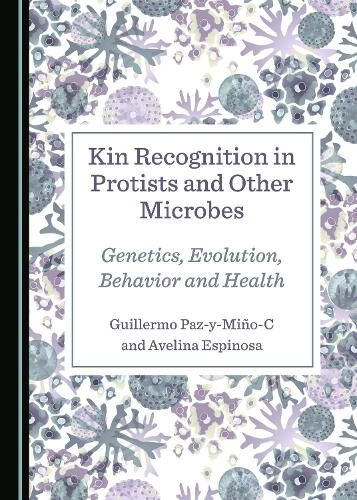Readings Newsletter
Become a Readings Member to make your shopping experience even easier.
Sign in or sign up for free!
You’re not far away from qualifying for FREE standard shipping within Australia
You’ve qualified for FREE standard shipping within Australia
The cart is loading…






Kin Recognition in Protists and Other Microbes is the first volume dedicated entirely to the genetics, evolution and behavior of cells capable of discriminating and recognizing taxa (other species), clones (other cell lines) and kin (as per gradual genetic proximity). It covers the advent of microbial models in the field of kin recognition; the polymorphisms of green-beard genes in social amebas, yeast and soil bacteria; the potential that unicells have to learn phenotypic cues for recognition; the role of clonality and kinship in pathogenicity (dysentery, malaria, sleeping sickness and Chagas); the social and spatial structure of microbes and their biogeography; and the relevance of unicells’ cooperation, sociality and cheating for our understanding of the origins of multicellularity. Offering over 200 figures and diagrams, this work will appeal to a broad audience, including researchers in academia, postdoctoral fellows, graduate students and research undergraduates. Science writers and college educators will also find it informative and practical for teaching.
$9.00 standard shipping within Australia
FREE standard shipping within Australia for orders over $100.00
Express & International shipping calculated at checkout
Kin Recognition in Protists and Other Microbes is the first volume dedicated entirely to the genetics, evolution and behavior of cells capable of discriminating and recognizing taxa (other species), clones (other cell lines) and kin (as per gradual genetic proximity). It covers the advent of microbial models in the field of kin recognition; the polymorphisms of green-beard genes in social amebas, yeast and soil bacteria; the potential that unicells have to learn phenotypic cues for recognition; the role of clonality and kinship in pathogenicity (dysentery, malaria, sleeping sickness and Chagas); the social and spatial structure of microbes and their biogeography; and the relevance of unicells’ cooperation, sociality and cheating for our understanding of the origins of multicellularity. Offering over 200 figures and diagrams, this work will appeal to a broad audience, including researchers in academia, postdoctoral fellows, graduate students and research undergraduates. Science writers and college educators will also find it informative and practical for teaching.